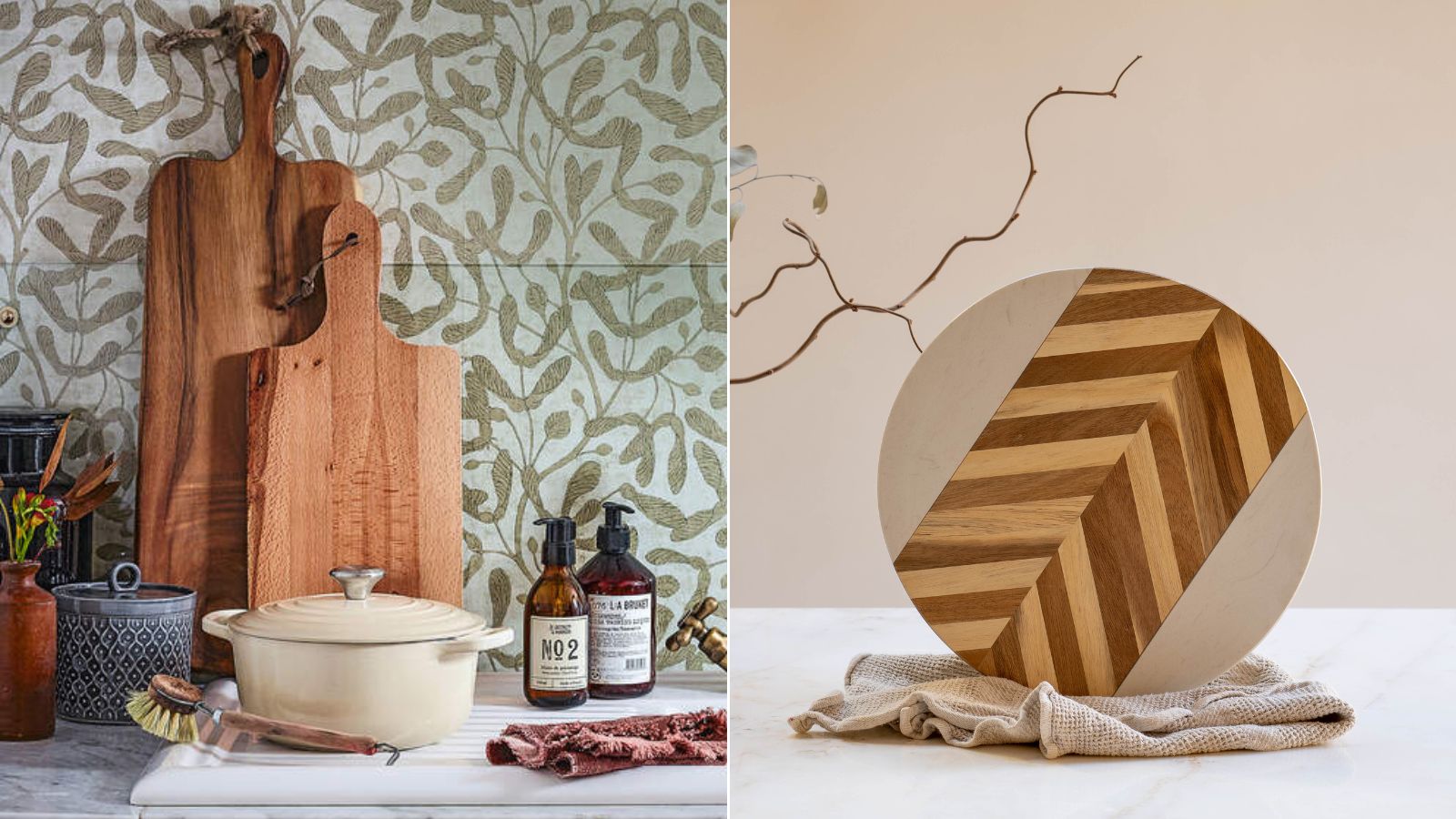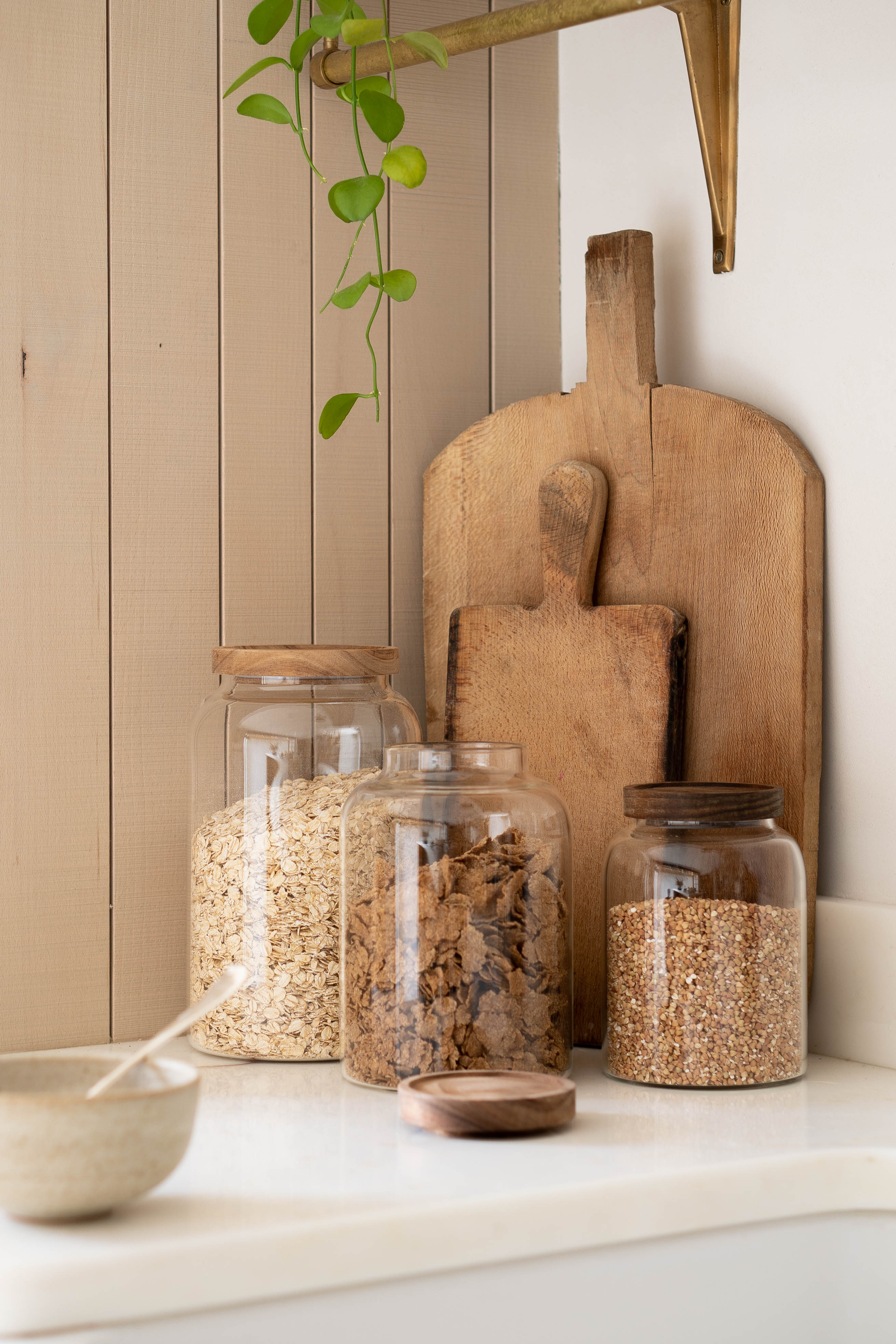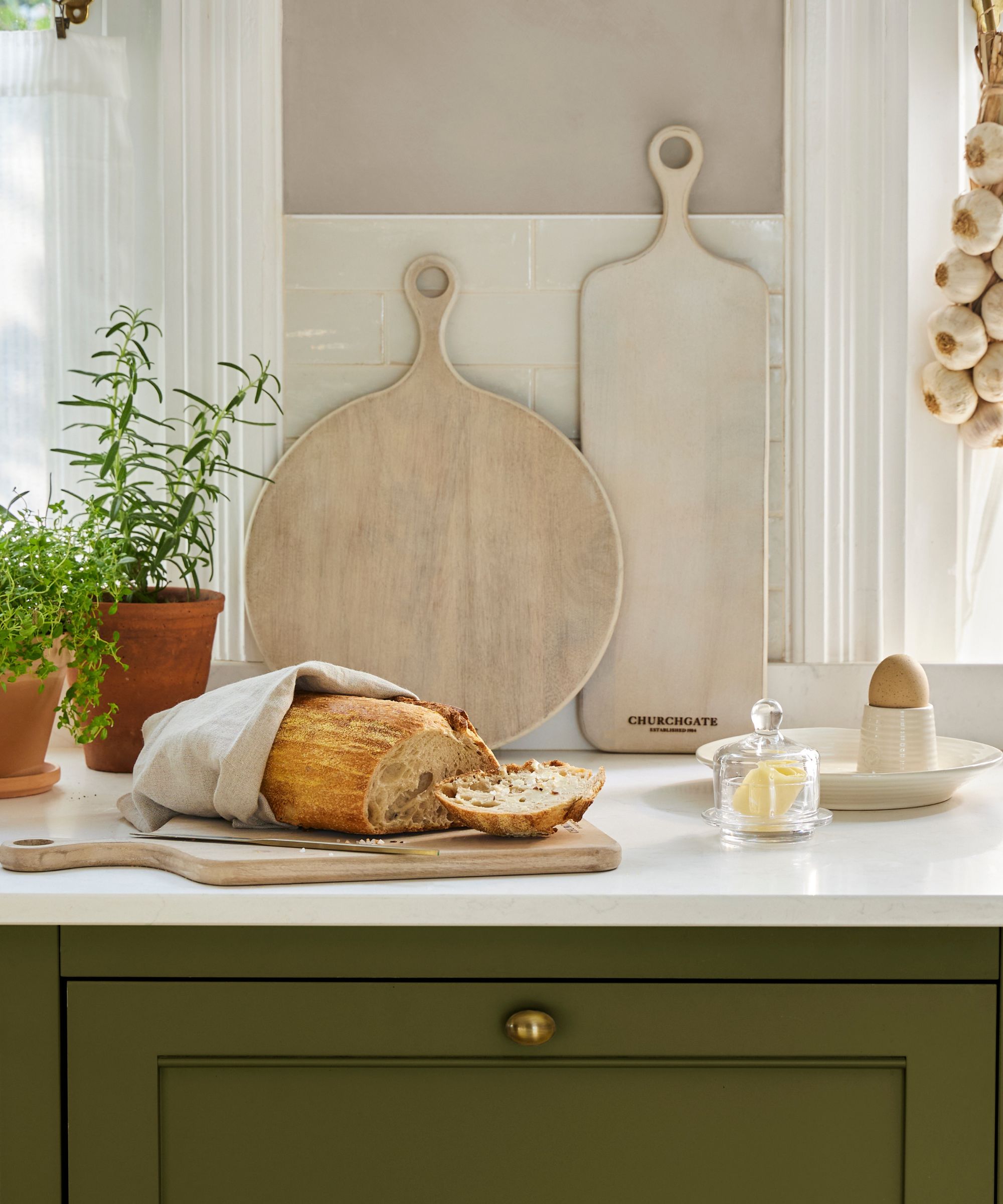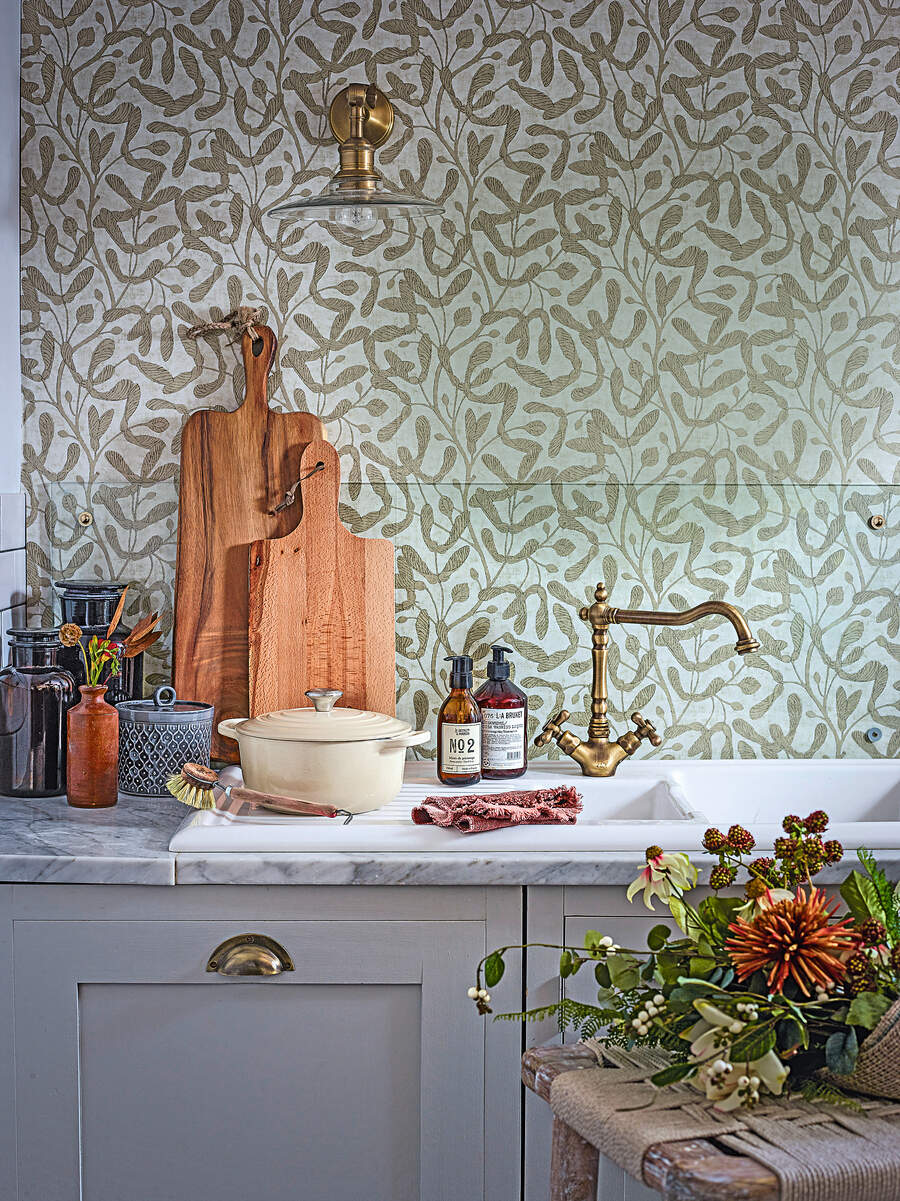
I own dozens of cutting boards in various shapes, sizes, and styles. Whether I'm chopping veggies, slicing meats, or preparing charcuterie, my boards work hard, and I'd be lost without them.
However, constant contact with food and liquids can make it difficult to keep cutting boards in top shape and free from harmful bacteria or mold. To ensure my boards stay hygienic and last for years, I make sure they are cleaned and cared for regularly.
Different types of cutting boards require different levels of maintenance. So, in this article, I'll share my favored methods for cleaning and caring for wooden, plastic, bamboo, and composite boards.
How to clean every type of cutting board
Washing and maintaining these practical tools is an essential part of cleaning a kitchen. These are my top tips for making the task a breeze:
Wooden Cutting Boards

I have a soft spot for wooden cutting boards. Nothing beats the rustic patina of a wooden board, and they add a touch of rustic charm to kitchens. But these boards need a bit more TLC to keep free from harmful germs.
How I clean wooden cutting boards
After each use, I make sure to wash my wooden cutting board with hot, soapy water. Hand washing is key here, so no soaking and definitely no dishwashers! Excessive moisture can cause the wood to warp or crack, and nobody wants that. Occasionally, I'll disinfect my wooden boards with a solution of one part white vinegar to four parts water. For stubborn stains and odors, a mixture of lemon juice and salt works wonders. Just sprinkle a little salt on the board, rub it with a cut lemon, let it sit for a few minutes, and rinse.
How I care for wooden cutting boards
To keep the wood from drying out, I oil my cutting board once a month using food-grade mineral oil. I simply apply a generous amount of oil, let it soak in for a few hours (or overnight), and wipe off the excess.
This food grade mineral oil is perfect for maintaining your wooden or bamboo cutting boards or sealing butcher blocks.
Plastic Cutting Boards
Plastic boards are not my favorite type of cutting board, as teeny tiny pieces of plastic can occasionally flake off the boards and end up in your meal. That being said, these boards are convenient, as they are dishwasher safe and come in various colors and sizes.
How I clean plastic cutting boards
Most plastic boards can be put in the dishwasher, which is good news for sanitizing them. When I wash mine by hand, I use hot, soapy water and a scrub brush. For a deeper clean, I use a solution of one tablespoon of bleach per gallon of water. Soak the board for a few minutes, then rinse thoroughly with water.
How I care for plastic cutting boards
Plastic boards can develop deep grooves over time, which can harbor harmful bacteria. When my board becomes excessively worn or damaged, I know it’s time to replace them. To prolong their lifespan, I try to avoid using harsh abrasives and stick to gentle scrubbers for everyday cleaning.
Bamboo cutting boards

Bamboo cutting boards are slightly less porous than wooden boards, but they still need regular care.
How I clean bamboo cutting boards
Like wooden boards, I hand wash my bamboo cutting board with hot, soapy water. Dishwashers are a no-no, as the high heat and moisture can damage the bamboo fibers. To disinfect them, I use a vinegar solution (one part vinegar to four parts water) or my trusty lemon and salt scrub.
How I care for bamboo cutting boards
Again, I oil my bamboo board monthly with food-grade mineral oil, as this helps maintain the board’s condition and keeps it looking great. I also try to avoid letting it soak in the sink to prevent the bamboo from swelling and splitting.
Composite Cutting Boards
Composite cutting boards are a blend of various materials, making them incredibly durable and low-maintenance. However, they still need regular cleaning to keep them looking and performing their best.
How I clean composite cutting boards
Conveniently, most composite boards are safe to put in the dishwasher. However, I always check the manufacturer’s instructions to be sure. When I wash them by hand, I use hot, soapy water and a sponge or dishcloth. Rinse thoroughly and dry with a towel.
How I care for composite cutting boards
Composite boards require minimal maintenance compared to wood or bamboo. I occasionally oil them if the manufacturer recommends it, just to keep them in good condition. As with other boards, I avoid extreme temperatures to prevent damage.
My top tips for maintaining cutting boards

Keep different boards for separate uses
You probably already know that you should use separate cutting boards for raw meat, poultry, and seafood to avoid cross-contamination with other foods like vegetables and fruits. Cross-contamination can lead to the spread of harmful bacteria, such as Salmonella and E. coli, which can cause food-borne illnesses.
I recommend purchasing color-coded cutting boards for meat, fish, and poultry, like this 4-piece CounterArt set from Wayfair. That way, I can keep my practical boards organized and stowed away in a kitchen cupboard while my best wooden boards are kept out on display
Always let boards dry completely
After washing my cutting boards, I make sure they are bone dry before storing them away. Standing moisture can lead to mold growth (the last thing you want around food preparation), and sometimes, moisture can damage the board's material.
Store your boards properly
As I mentioned above, I keep my best cutting boards on display on the wall or neatly stacked on my countertop. I store my other cutting boards in a dry, upright position to allow air circulation and prevent moisture buildup. I also avoid stacking boards on top of each other, especially if they are still damp, as this can trap moisture and lead to warping or mildew.
FAQs
How do I know when it's time to replace a cutting board?
If a board has developed deep grooves or cracks or is excessively worn, I take this as a sign that it’s time to replace it. Deep grooves can harbor bacteria and make it difficult to clean the board thoroughly. Likewise, cracks in wooden or bamboo boards can compromise the board's structural integrity and make it unsafe to use.
Of course, these boards don’t have to be tossed out. Suppose a particularly beautiful wooden cutting board is no longer fit for purpose. In that case, I like repurposing them as charcuterie boards and serving platters for dinner parties (just place a little wax paper between the food and board).
How do I get rid of unpleasant odors from a cutting board?
To remove odors from my cutting boards, I start with the tried-and-tested cut lemon trick (outlined above), as lemon juice has natural deodorizing properties. Another effective method is to use a paste made from baking soda and water. For tougher stains, I apply the paste to the board, let it sit for a few minutes to absorb the odors, and then rinse thoroughly with water. You can also use white vinegar, which is both a disinfectant and a deodorizer. Simply wipe the board with vinegar, let it sit for a few minutes, and then rinse.
Make a habit of cleaning cutting boards after every use to keep them looking their best.







